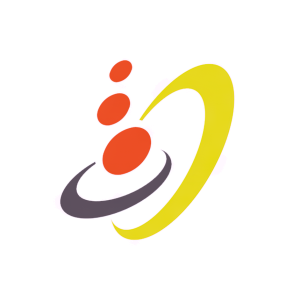Karyopharm Announces Poster Presentation on Selinexor in Myelofibrosis at the 2025 European Hematology Association Annual Meeting
Rhea-AI Summary
Karyopharm Therapeutics (KPTI) will present new data on selinexor in treating myelofibrosis at the 2025 EHA Annual Meeting. The Phase 2 XPORT-MF-035 trial results showed promising outcomes in hard-to-treat patients:
- 67% of selinexor-treated patients achieved ≥25% spleen volume reduction vs 38% in physician's choice (PC) group - 33% achieved ≥35% spleen volume reduction vs 13% in PC group - Higher mean hemoglobin levels and lower transfusion rates - Greater reductions in key cytokines (IL-6, IL-8, TNFa, hepcidin)
The trial involved 24 patients (12 per arm), with 6 crossing over from PC to selinexor. Common side effects included decreased weight (50%), anemia (25%), and nausea (33%). Notably, no treatment discontinuations occurred in the selinexor arm due to adverse events.
Positive
- 67% of selinexor-treated patients achieved spleen volume reduction of ≥25% vs 38% in control group
- Higher mean hemoglobin levels and lower transfusion requirements compared to control group
- No treatment discontinuations due to adverse events in the selinexor arm
- Evidence of disease modification through reduction in key disease-related cytokines
Negative
- Small trial size with only 24 total patients
- Significant side effects including weight loss (50%), anemia (25%), and nausea (33%)
Insights
Karyopharm's selinexor shows promising efficacy in hard-to-treat myelofibrosis with positive impacts across all four disease hallmarks.
The presented Phase 2 data for selinexor in myelofibrosis represents a meaningful clinical advance for several reasons. In this heavily-pretreated population, selinexor demonstrated activity across all four hallmarks of myelofibrosis - spleen volume reduction, symptom improvement, hemoglobin stabilization, and disease modification markers.
The spleen volume reduction data is particularly noteworthy:
The hemoglobin stabilization effect is clinically significant as anemia represents a critical unmet need in myelofibrosis. Patients receiving selinexor maintained higher mean hemoglobin and required fewer transfusions - a meaningful quality-of-life benefit.
Perhaps most intriguing is the cytokine modulation data suggesting selinexor's disease-modifying potential. The observed reductions in IL-6, IL-8, TNFα, and hepcidin align with selinexor's mechanism targeting nuclear export, potentially addressing inflammatory drivers of disease progression.
The safety profile appears manageable with no treatment discontinuations in the selinexor arm. While weight loss, asthenia, nausea and thrombocytopenia were observed - known class effects of selinexor - the absence of treatment discontinuations suggests tolerability in this population.
For context, myelofibrosis remains a challenging malignancy with limited effective options after JAK inhibitor failure, representing a significant unmet medical need. These results position selinexor as a potentially valuable addition to the limited treatment landscape.
"We are encouraged by our new data in hard-to-treat myelofibrosis patients where we observed spleen volume reduction, symptom improvement, hemoglobin stabilization and evidence of disease modification with selinexor monotherapy, addressing all four hallmarks of the disease," said Reshma Rangwala, MD, PhD, Chief Medical Officer of Karyopharm. "This new data adds to our growing body of evidence highlighting selinexor's potential in patients with myelofibrosis."
The accepted abstract and data highlights are below.
- Abstract number: PS1821
- Title: A study to evaluate single-agent selinexor versus physician's choice in participants with previously treated myelofibrosis
- Date/Time: Saturday, June 14, 18:30-19:30 CEST
- Presenter: Alessandro Lucchesi, MD
Highlights
- Data from the XPORT-MF-035 (NCT04562870) Phase 2, randomized, open-label trial of selinexor versus physician's-choice (PC) in hard-to-treat patients with heavily pretreated myelofibrosis indicated signs of single-agent clinical activity with selinexor, including spleen volume reduction, hemoglobin stabilization, symptom improvement and evidence of disease modification.
- Patients were randomized 1:1 to either selinexor monotherapy or PC. Selinexor was administered at 80 mg weekly for the first two cycles and then decreased to 60 mg weekly from cycle 3 onwards. An optional crossover was available for PC treated patients if they met predefined spleen progression criteria.
- In total, 12 patients were randomized to the selinexor arm and 12 patients to the PC arm; 6 patients crossed over from PC to selinexor. Inclusive of crossover, spleen volume reduction of
25% or more (SVR25) at anytime was achieved in 8/12 (67% ) efficacy evaluable selinexor treated patients versus 3/8 (38% ) efficacy evaluable patients treated with PC. Spleen volume reduction of35% or more (SVR35) at anytime was observed in 4/12 (33% ) efficacy evaluable patients treated with selinexor versus 1/8 (13% ) efficacy evaluable patients treated with PC.
- Patients treated with selinexor had higher mean hemoglobin levels throughout the study duration and lower rates of red blood cell transfusions than those treated with PC.
- Data on key cytokines that are relevant to myelofibrosis pathogenesis, symptom development, and anemia including IL-6, IL-8, TNFa, and hepcidin, demonstrated greater reductions at week 4 compared to baseline in patients treated with selinexor than patients treated with PC.
- Most common (≥
25% overall) treatment emergent adverse events (TEAEs) in the randomized arms were decreased weight (selinexor:50% ; PC:50% ), anemia (25% ;58% ), asthenia (42% ;25% ), nausea (33% ;25% ), thrombocytopenia (33% ;25% ) and upper respiratory tract infection (25% ;33% ). Most common (≥15% in any arm) Grade 3+ TEAEs were anemia (17% ;58% ), cardiac failure (0% ;17% ), decreased appetite (17% ;0% ) and nausea (17% ;0% ). No treatment discontinuations due to TEAEs were observed in the selinexor arm.
About XPOVIO® (selinexor)
XPOVIO is a first-in-class, oral exportin 1 (XPO1) inhibitor and the first of Karyopharm's Selective Inhibitor of Nuclear Export (SINE) compounds for the treatment of cancer. XPOVIO functions by selectively binding to and inhibiting the nuclear export protein XPO1. XPOVIO is approved in the
For more information about Karyopharm's products or clinical trials, please contact the Medical Information department at: Tel: +1 (888) 209-9326; Email: medicalinformation@karyopharm.com
XPOVIO® (selinexor) is a prescription medicine approved:
- In combination with bortezomib and dexamethasone for the treatment of adult patients with multiple myeloma who have received at least one prior therapy (XVd).
- In combination with dexamethasone for the treatment of adult patients with relapsed or refractory multiple myeloma who have received at least four prior therapies and whose disease is refractory to at least two proteasome inhibitors, at least two immunomodulatory agents, and an anti‐CD38 monoclonal antibody (Xd).
- For the treatment of adult patients with relapsed or refractory diffuse large B‐cell lymphoma (DLBCL), not otherwise specified, including DLBCL arising from follicular lymphoma, after at least two lines of systemic therapy. This indication is approved under accelerated approval based on response rate. Continued approval for this indication may be contingent upon verification and description of clinical benefit in confirmatory trial(s).
SELECT IMPORTANT SAFETY INFORMATION
Warnings and Precautions
- Thrombocytopenia: Monitor platelet counts throughout treatment. Manage with dose interruption and/or reduction and supportive care.
- Neutropenia: Monitor neutrophil counts throughout treatment. Manage with dose interruption and/or reduction and granulocyte colony‐stimulating factors.
- Gastrointestinal Toxicity: Nausea, vomiting, diarrhea, anorexia, and weight loss may occur. Provide antiemetic prophylaxis. Manage with dose interruption and/or reduction, antiemetics, and supportive care.
- Hyponatremia: Monitor serum sodium levels throughout treatment. Correct for concurrent hyperglycemia and high serum paraprotein levels. Manage with dose interruption, reduction, or discontinuation, and supportive care.
- Serious Infection: Monitor for infection and treat promptly.
- Neurological Toxicity: Advise patients to refrain from driving and engaging in hazardous occupations or activities until neurological toxicity resolves. Optimize hydration status and concomitant medications to avoid dizziness or mental status changes.
- Embryo‐Fetal Toxicity: Can cause fetal harm. Advise females of reproductive potential and males with a female partner of reproductive potential, of the potential risk to a fetus and use of effective contraception.
- Cataract: Cataracts may develop or progress. Treatment of cataracts usually requires surgical removal of the cataract.
Adverse Reactions
- The most common adverse reactions (≥
20% ) in patients with multiple myeloma who receive XVd are fatigue, nausea, decreased appetite, diarrhea, peripheral neuropathy, upper respiratory tract infection, decreased weight, cataract and vomiting. Grade 3‐4 laboratory abnormalities (≥10% ) are thrombocytopenia, lymphopenia, hypophosphatemia, anemia, hyponatremia and neutropenia. In theBOSTON trial, fatal adverse reactions occurred in6% of patients within 30 days of last treatment. Serious adverse reactions occurred in52% of patients. Treatment discontinuation rate due to adverse reactions was19% . - The most common adverse reactions (≥
20% ) in patients with multiple myeloma who receive Xd are thrombocytopenia, fatigue, nausea, anemia, decreased appetite, decreased weight, diarrhea, vomiting, hyponatremia, neutropenia, leukopenia, constipation, dyspnea and upper respiratory tract infection. In the STORM trial, fatal adverse reactions occurred in9% of patients. Serious adverse reactions occurred in58% of patients. Treatment discontinuation rate due to adverse reactions was27% . - The most common adverse reactions (incidence ≥
20% ) in patients with DLBCL, excluding laboratory abnormalities, are fatigue, nausea, diarrhea, appetite decrease, weight decrease, constipation, vomiting, and pyrexia. Grade 3‐4 laboratory abnormalities (≥15% ) are thrombocytopenia, lymphopenia, neutropenia, anemia, and hyponatremia. In the SADAL trial, fatal adverse reactions occurred in3.7% of patients within 30 days, and5% of patients within 60 days of last treatment; the most frequent fatal adverse reactions was infection (4.5% of patients). Serious adverse reactions occurred in46% of patients; the most frequent serious adverse reaction was infection (21% of patients). Discontinuation due to adverse reactions occurred in17% of patients.
Use In Specific Populations
Lactation: Advise not to breastfeed.
For additional product information, including full prescribing information, please visit www.XPOVIO.com.
To report SUSPECTED ADVERSE REACTIONS, contact Karyopharm Therapeutics Inc. at 1‐888‐209‐9326 or FDA at 1‐800‐FDA‐1088 or www.fda.gov/medwatch.
About Karyopharm Therapeutics
Karyopharm Therapeutics Inc. (Nasdaq: KPTI) is a commercial-stage pharmaceutical company whose dedication to pioneering novel cancer therapies is fueled by a belief in the extraordinary strength and courage of patients with cancer. Since its founding, Karyopharm has been an industry leader in oral compounds that address nuclear export dysregulation, a fundamental mechanism of oncogenesis. Karyopharm's lead compound and first-in-class, oral exportin 1 (XPO1) inhibitor, XPOVIO® (selinexor), is approved in the
Forward-Looking Statements
This press release contains forward-looking statements within the meaning of The Private Securities Litigation Reform Act of 1995. Such forward-looking statements include those regarding the ability of selinexor to treat patients with multiple myeloma, endometrial cancer, myelofibrosis, diffuse large B-cell lymphoma and other diseases; and expectations with respect to the clinical development plans and potential regulatory submissions of selinexor. Such statements are subject to numerous important factors, risks and uncertainties, many of which are beyond Karyopharm's control, that may cause actual events or results to differ materially from Karyopharm's current expectations. For example, there can be no guarantee that Karyopharm will successfully commercialize XPOVIO or that any of Karyopharm's drug candidates, including selinexor, will successfully complete necessary clinical development phases or that development of any of Karyopharm's drug candidates will continue. Further, there can be no guarantee that any positive developments in the development or commercialization of Karyopharm's drug candidate portfolio will result in stock price appreciation. Management's expectations and, therefore, any forward-looking statements in this press release could also be affected by risks and uncertainties relating to a number of other factors, including the following: the adoption of XPOVIO in the commercial marketplace, the timing and costs involved in commercializing XPOVIO or any of Karyopharm's drug candidates that receive regulatory approval; the ability to obtain and retain regulatory approval of XPOVIO or any of Karyopharm's drug candidates that receive regulatory approval; Karyopharm's results of clinical trials and preclinical trials, including subsequent analysis of existing data and new data received from ongoing and future trials; the content and timing of decisions made by the
XPOVIO® and NEXPOVIO® are registered trademarks of Karyopharm Therapeutics Inc.
![]() View original content to download multimedia:https://www.prnewswire.com/news-releases/karyopharm-announces-poster-presentation-on-selinexor-in-myelofibrosis-at-the-2025-european-hematology-association-annual-meeting-302454678.html
View original content to download multimedia:https://www.prnewswire.com/news-releases/karyopharm-announces-poster-presentation-on-selinexor-in-myelofibrosis-at-the-2025-european-hematology-association-annual-meeting-302454678.html
SOURCE Karyopharm Therapeutics Inc.








